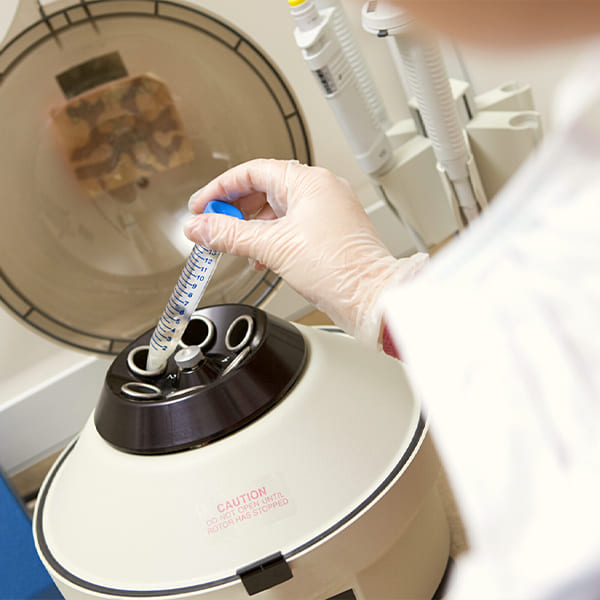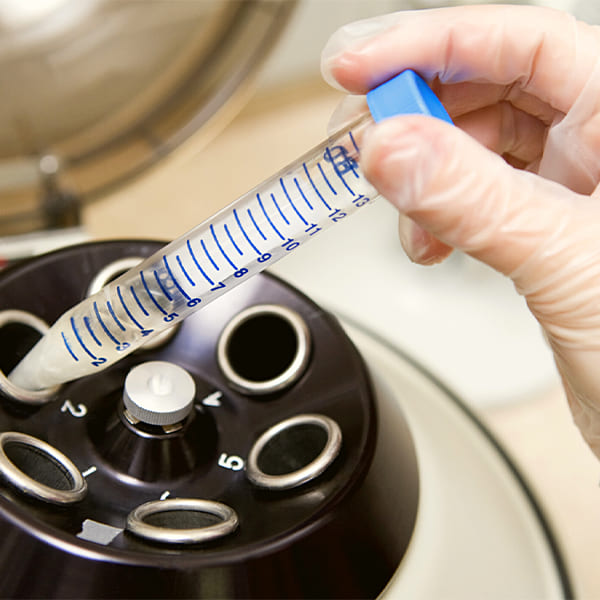- Home
- About Us
- Why BFI
- Treatments
Advanced IVF Treatment
Donor Services
Fertility Preservation
Advanced IVF Treatment
Donor Services
Fertility Preservation
- Locations
- Resources
- Contact Us
Cryopreservation – Freezing and storage
Cryopreservation is a medical term for the freezing of biological tissue for future use at a very low temperature. Present-day technology allows the freezing of all types of reproductive tissue like Embryos, Blastocysts. Eggs (oocytes), sperms (semen), testicular tissue, ovarian tissue etc.
The main aim is to preserve this tissue intact for future use.
The tissue is stored in liquid nitrogen at temperatures up to minus 196 degrees Celsius. At these sub-zero temperatures, cellular metabolic activity is completely blocked, and they remain in a suspended state of life for any duration.
Latest vitrification techniques for freezing eggs and embryos have improved the results of cryopreservation dramatically. Our team has been trained by Dr Tetsunori Mukaida and a team of Hiroshima HART institute Japan. Dr Mukaida was one of the inventors of vitrification techniques.
We are proud that Bavishi fertility Institute achieved the first Live birth of India with vitrified frozen eggs in 2008.
Techniques
Body cells contain a lot of water. When freezing them, the problem with survival lies in ice crystal formation that can negatively impact quality after thawing. This problem is more with larger cells like embryos or oocytes.
Vitrification – Fast freezing
It is a very rapid freezing process. Rapid freezing prevents ice crystal formation and converts fluid into a jelly/glass-like structure. It gives excellent recovery after thawing. It is a preferred method for embryos and oocytes.
Slow freezing
In this process, tissue temperature is reduced gradually. This process has to be controlled with a very high technology programmed freezer. It is preferred for sperm, testicular tissue and ovarian tissue.
Freezing and vitrification techniques are a fundamental part of assisted reproduction techniques since they allow to conserve or cryopreserve eggs, sperm and embryos of the best quality.

Embryo - Blastocyst Cryopreservation
This special freezing technology allows vitrified frozen embryos today to give exactly the same chances of success as those obtained with fresh treatments. Without going through the entire ovarian stimulation and fertilization process again, couples have a great opportunity to achieve their dream of parenting. The frozen embryos transfer can cost less than one third compared to a fresh IVF cycle with similar success rates.
The embryos/blastocysts can be kept frozen for any amount of time up to ten years or even more.
When is cryopreservation – freezing of embryos/blastocysts done?
Extra remaining embryos in an IVF cycle after fresh embryo transfer.
When the fresh transfer is not possible due to ovarian hyperstimulation (OHSS), endometrium problem or other medical condition.
When a couple wants to delay conceiving but delaying may reduce fertility. Like females more than 35 years of age, Females with poor ovarian reserve – reduced egg count, before cancer treatment, before ovarian surgery etc.
As a part of a strategy to improve IVF results in repeated IVF Failure
When ERA– Endometrial receptivity array test is not receptive
In patients with a poor ovarian response to accumulating more embryos from 2 or more IVF cycles, to have a sufficient number of embryos for transfer or to carry out a PGT – pre-implantation genetic testing cycle.
As a part of the dual stimulation cycle – DuoStim to achieve optimum success ratio in patients of poor ovarian reserve.
Oocyte cryopreservation – Egg freezing Vitrification

Your fertility under your control.
For women who want to postpone their motherhood and do not have a male partner or don’t want to make embryos which they man not use, egg freezing is the only option.
The aim of the Vitrification of oocytes is to freeze them in a way that allows a woman’s reproductive capacity to be postponed for as long as desired, thus maintaining the same chances of becoming pregnant as at the time when the eggs are vitrified.
We are proud that Bavishi fertility Institute achieved the first Live birth of India with vitrified frozen eggs.
The indications of this laboratory technique are for the preservation of fertility, ideal for women who want to delay motherhood or at risk of reduction in ovarian function.
When is cryopreservation – egg freezing done?
- Women want to delay motherhood beyond 35 years of age
- Women with a reduced ovarian function who want to delay motherhood. If you have irregular cycles and planning to delay motherhood, It is a good idea to get your ovarian function checked
- Cancer patients before undergoing chemo or radiotherapy; also those who require bone marrow transplantation
- Non-cancer patients who are going to receive treatment toxic to ovaries
- Women undergoing major ovarian surgery or surgery for advanced endometriosis as these surgeries considerably reduce ovarian function
- The indications are multiple and varied, with the common denominator of postponing the fertilization of the oocytes and/or pregnancy
- Cryopreserved eggs can be thawed and fertilized in the laboratory.
Once the embryos are formed, they are transferred to the uterus for implantation.
How is cryopreservation – egg freezing done? – process
The process is similar to conventional IVF till the stage of egg retrieval. The first step is stimulation with gonadotropin hormones ( FSH & or HMG ) to create more eggs. Once the follicles have reached the appropriate size, oocyte retrieval is done. It is a short procedure under mild anaesthesia. Here eggs are aspirated by sonography guidance by a needle inserted through the vagina. These eggs are then assessed for maturity; in conventional IVF, the mature eggs are fertilized. While here, mature eggs are frozen by vitrification. At the time of use, these eggs are thawed (warmed or brought back to life) and fertilized exactly like routine IVF-ICSI treatment.
The oocytes can be kept cryopreserved for as long as the patient wants or needs, with no time limitation.
Semen – sperm cryopreservation – semen freezing
Semen freezing is very easy, affordable and efficient to freeze semen.
When is cryopreservation – sperm freezing done? – Indication
- Husbands who can’t remain present on the day of semen need
- Travelling job, military job, staying abroad etc.
- Husbands who can’t give semen on demand
- Before IVF treatment for safe availability of good sperm
- Males with very poor sperm count as in future further deterioration is possible.
- Sperm collected from testis or epididymis through biopsy
- Cancer patients before undergoing chemo or radiotherapy; also those who require bone marrow transplantation
- Non-cancer patients who are going to receive treatment toxic to sperms
- Sperm donation: The semen of donors is frozen and kept ready in semen bank – ART bank. This ensures an adequate supply of a wide variety of good quality sperm at any time.

Using frozen sperms does not affect the results of IVF. If we use frozen sperms for IUI, a minor reduction in the success rate is expected.
Freezing of eggs, embryos, blastocysts, sperm, testicular tissue and ovarian tissue is a refined, proven science and has created new possibilities and improved the success rate of IVF treatment.
Advantage Bavishi Fertility Institute
We have a robust freezing programme. Every important, delicate and fragile biological material is taken care of with utmost care. BFI was the first to achieve the live birth of India with frozen eggs using new generation vitrification technology.
